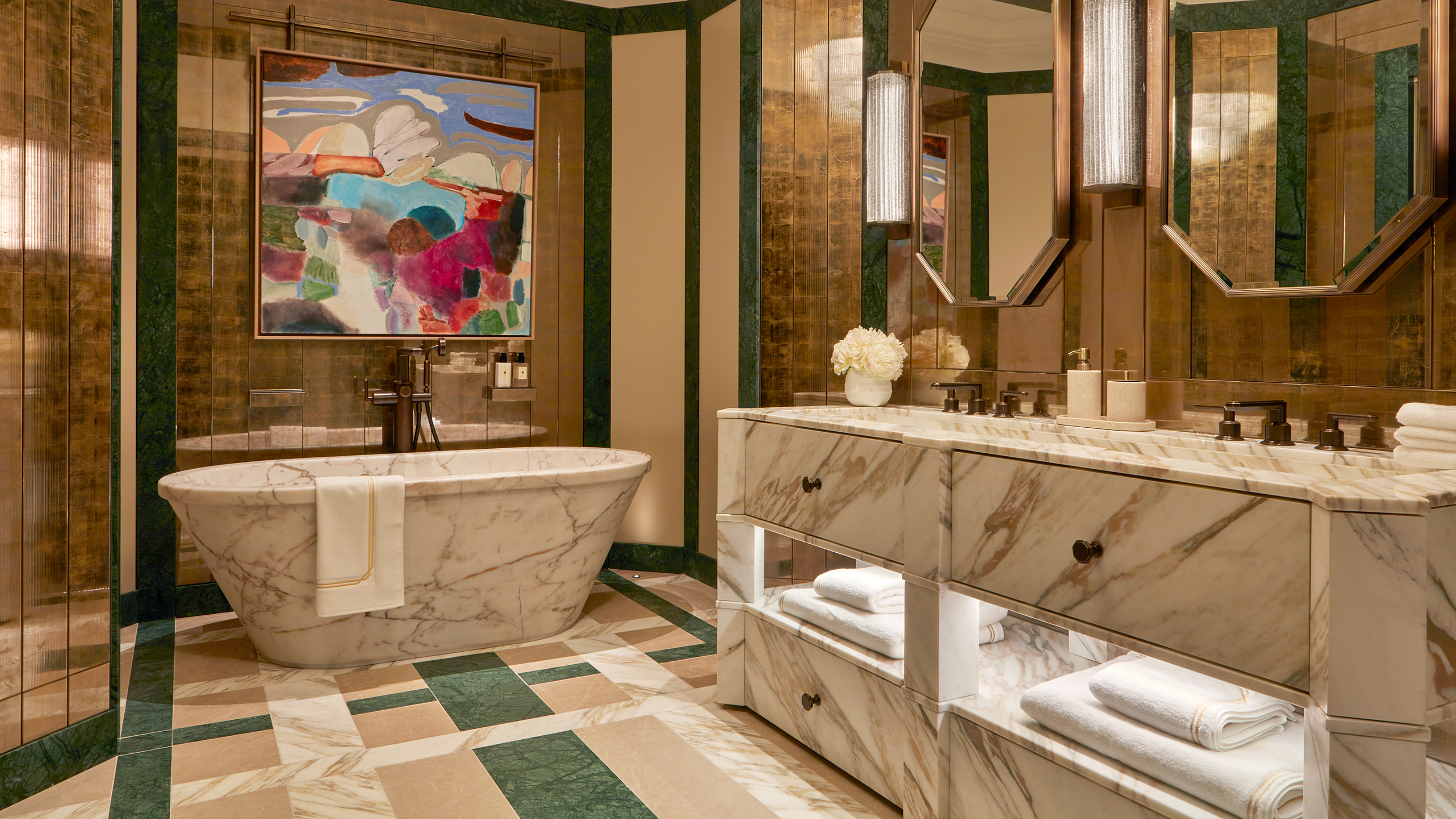
Your bathroom flooring can often feel like a secondary decision, something you brush aside, and pick at random at the last minute. "How bad can it be?" you may ask yourself. I imagine this is the same thing those people with avocado-green carpeted bathrooms asked themselves back in the 1970s, and look how that turned out.
A beautiful bathroom design relies on a harmonious blend of thoughtful design choices. No matter how chic your bathroom walls are, if the flooring doesn't match, your bathroom won't be meeting its full potential.
So, if you want to avoid the bathroom flooring faux pas made by those who came before us, take a word of advice from the experts on outdated flooring trends for bathrooms in 2025.
1. Stark White Floors
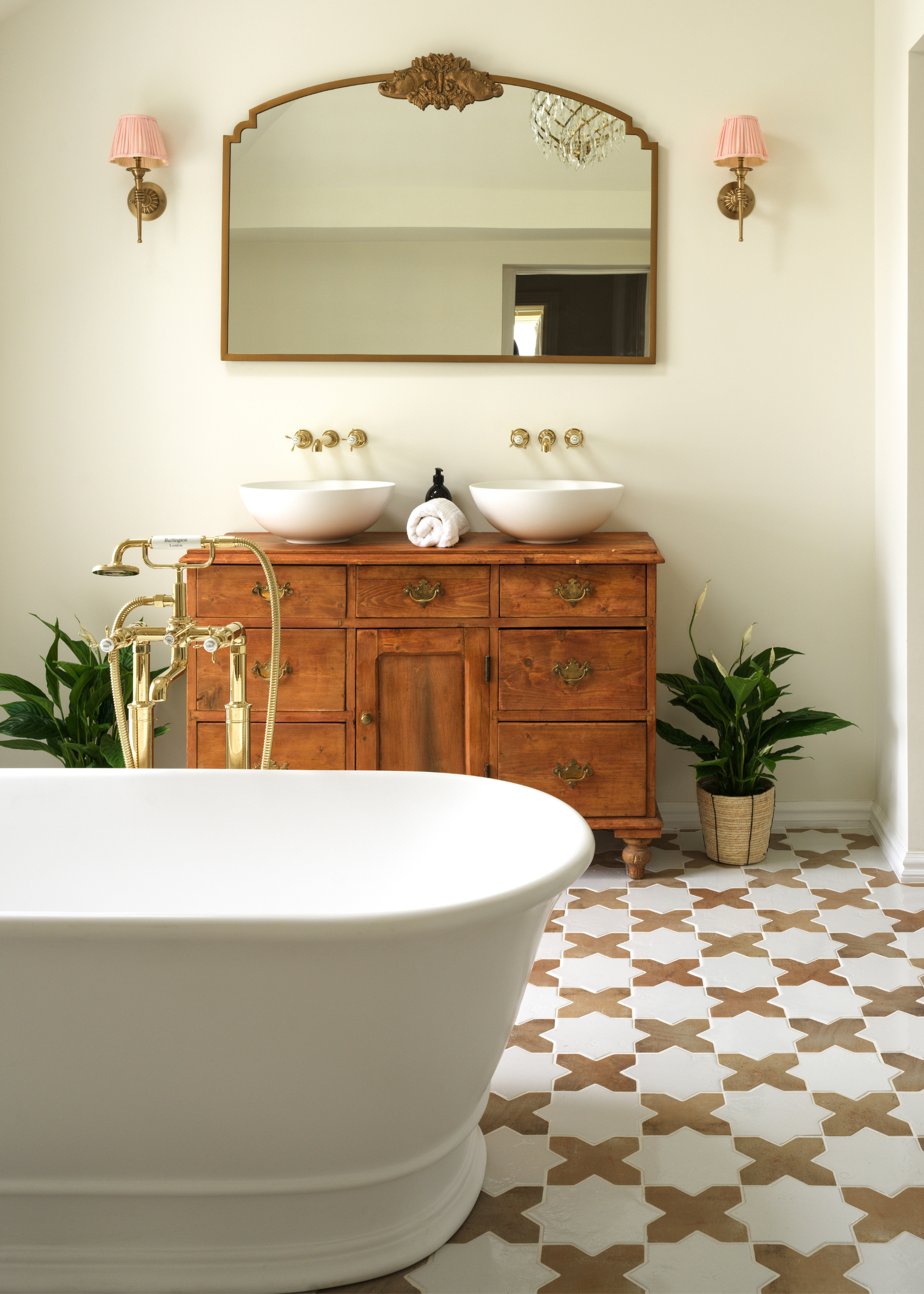
"Pure white floors have long been seen as the shortcut to a clean, contemporary space, but in reality, they’re often the hardest to live with," explains Grazzie Wilson from Ca Pietra.
Once the go-to choice for slick, modern bathroom designs, white flooring quickly reveals itself as more of a hassle than it's worth. The unforgiving color leaves nowhere for stains and marks to hide, making it an extremely high-maintenance choice.
"White can look striking at first glance, but it shows up every footprint, every speck of dust, every drop of water. In a bathroom, that kind of perfectionism is exhausting," Grazzie explains. "And beyond the upkeep, there’s the atmosphere: white floors can tip quickly from fresh to stark, especially when paired with white sanitaryware and chrome. What you’re left with is a space that feels more clinical than calming."
While there are plenty of design tips you can implement to help make plain white bathrooms look more interesting, beginning with a warmer, softer base is a far easier way to achieve this look. "This is where the shift in palette really comes into its own. We’re seeing a move away from cool greys and optic whites towards something softer, earthier, and far more grounded," Grazzie says.
Stark, harsh tones have certainly become a less popular choice in interior design over recent years, making way for softer, warmer tones to take their place.
Grazzie adds, "Even so, white hasn’t disappeared entirely, it has just softened. A warm chalk, white, or off-white with a mineral, stony quality can still bring brightness, but in a way that feels natural rather than stark. It’s about nuance. Layered tones and subtle texture now matter more than ever in creating bathrooms that have a personal and inviting touch."
2. One-Note Tiling
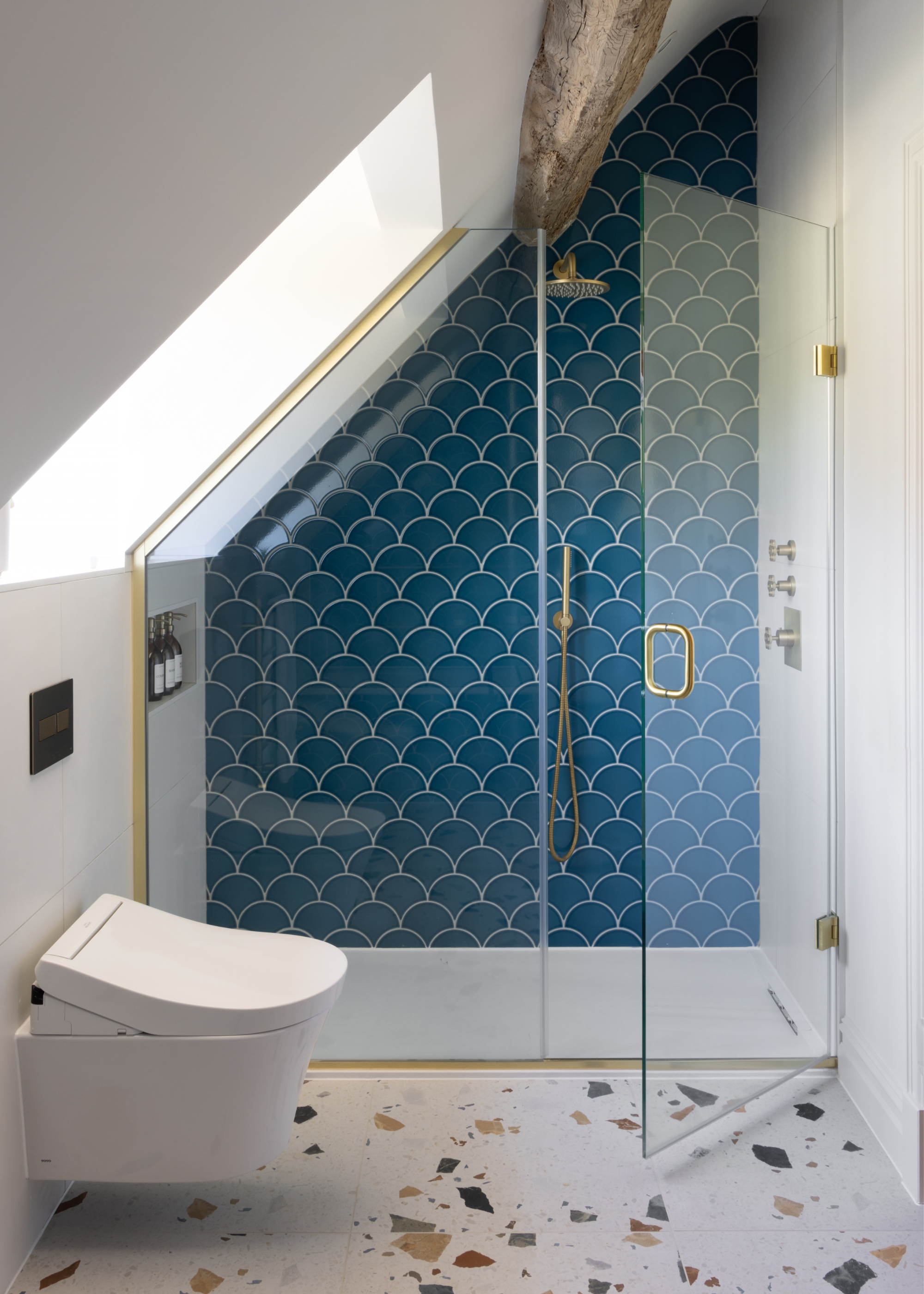
Floor-to-ceiling tiling was favored for many years in bathroom designs, beloved for the all-encompassing, wraparound look it offers. However, on the other side of the coin, relying on one material for the entirety of your bathroom removes the possibility of creating a more layered, nuanced design.
As Louise Ashdown, Head of Design at West One Bathrooms, says, "There was a time when using the same tile across both the floor and walls was seen as a clean, modern solution, but increasingly, it’s being viewed as a missed opportunity. When every surface is finished in the same material, the room can feel flat, almost one-note. Today’s bathrooms are much more expressive than that."
Moving past this one-note approach to your bathroom allows for more creativity, ultimately resulting in a more unique design.
"Clients are also becoming more confident with layering tones - warm neutrals, blush stone, muted clay - all in different finishes that play off one another," says Louise, "It’s no longer about matching, but about creating quiet contrast and the bathroom floor has a big role to play in that."
3. Materials Trying to Be Something They're Not
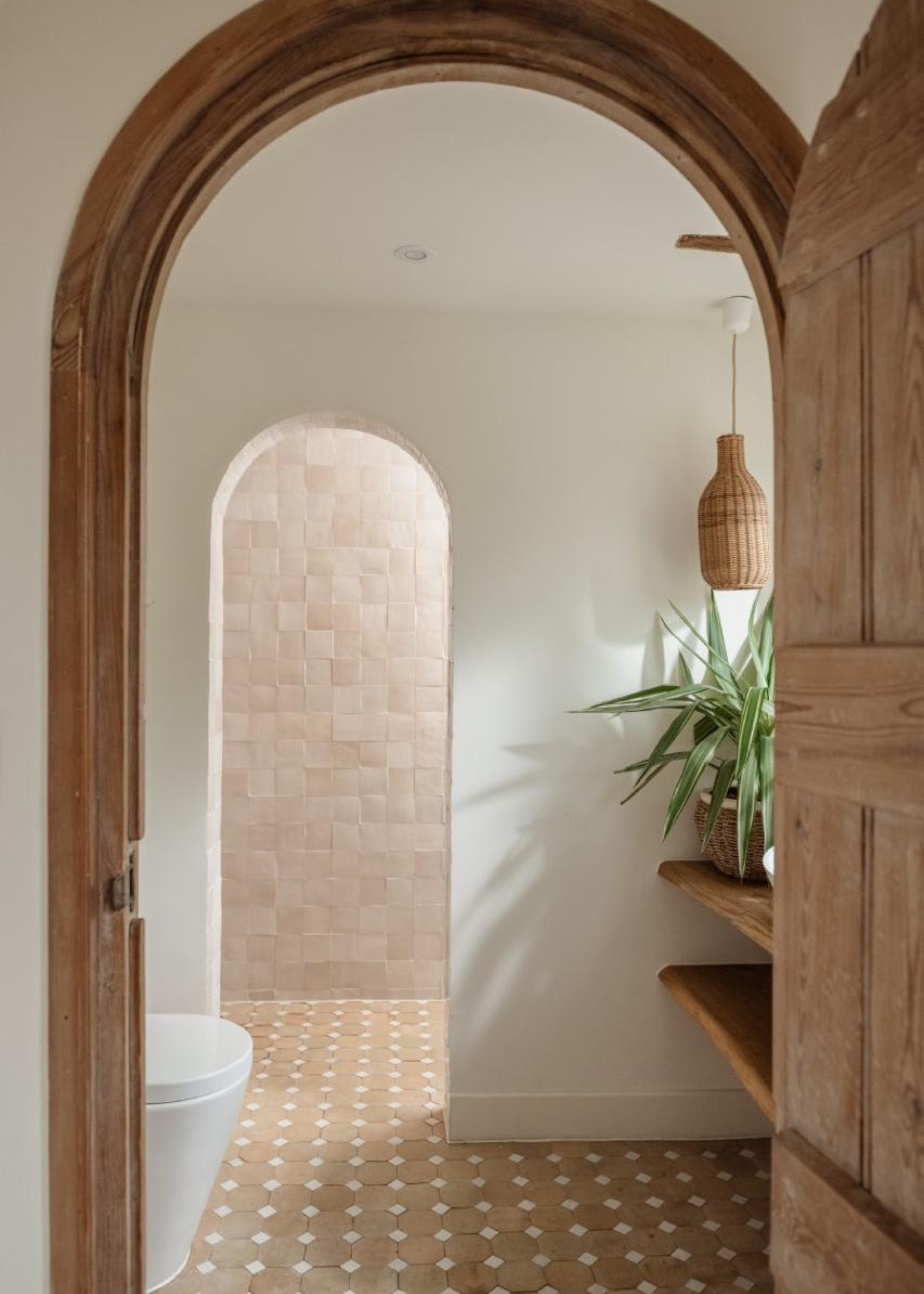
No more material mimicry, say the experts. At first, the introduction of cheaper materials that mimic the appearance of something more high-end was understandably exciting and appealing; however, as these have become more commonplace, they've become easier to spot, and can often have the reverse effect, making your design look cheaper.
"Vinyl flooring has its place, but when it tries to imitate wood, stone, or even encaustic tiles, it rarely feels convincing," comments Damla Turgut, from Otto Tiles.
Wood-look vinyl was an extremely popular choice for bathrooms at one point, serving as a workaround for the impracticalities of using wooden flooring in toilets and bathrooms.
However, as Damla explains, "You lose the depth and variation that makes those materials special."
When a material is trying so hard to look like something it isn't, you can often end up losing the very characteristics that made that material beautiful to begin with.
"Ceramic is a brilliant, practical material and beautiful in its own right; it doesn’t need to pretend to be anything else," says Damla, "Printed effects that try to mimic Zellige, marble, or terrazzo, lose the joy of what makes those materials so special."
Celebrating materials for what they are, rather than what they are trying to be, is the key to creating a space that feels authentic in its beauty. "There’s something really lovely about embracing ceramic for what it is: glazed, tonal, and full of subtle variation," adds Damla.
4. High Contrast Graphic Tiles
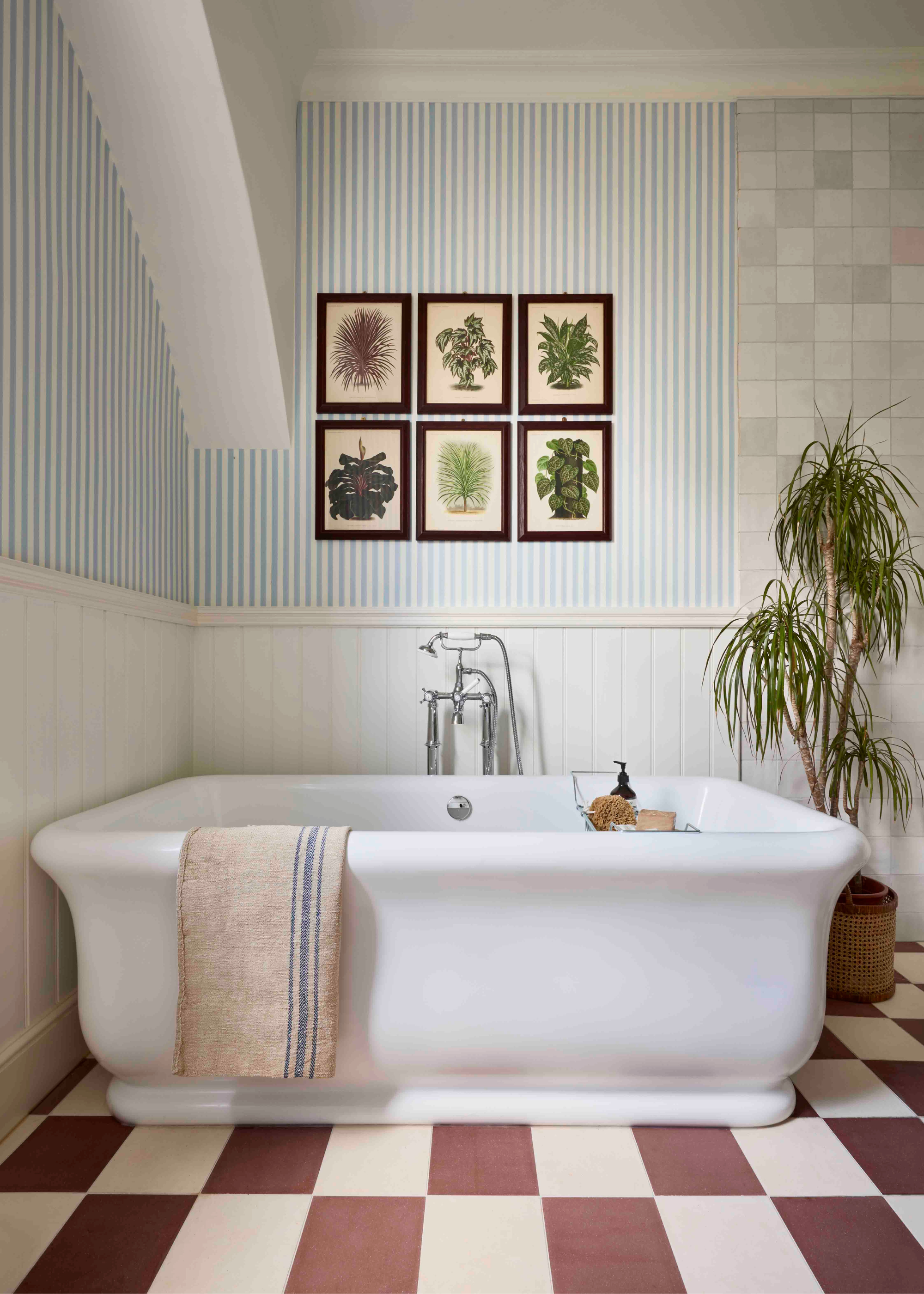
Even the classics can grow boring, especially when they're used in the wrong context. "Black and white will always be a classic, and there’s definitely still a place for it. But those really bold, graphic geometries can feel quite harsh in a bathroom," explains Damla.
In a grand entrance, or even a classic, modern farmhouse kitchen, black and white checkerboard can look striking, with all its traditional appeal, but in bathrooms, it can frequently overwhelm the space with its harsh contrast and sharp lines.
"Checkerboard flooring patterns in really stark black-and-white combos have gone stale," argues Harvey Ghinn, Managing Director and Interior Specialist at Trade Base Flooring. "It’s not that it can’t be done beautifully, but when it’s too graphic, it risks looking more diner than designer."
5. Pebble Floor Showers
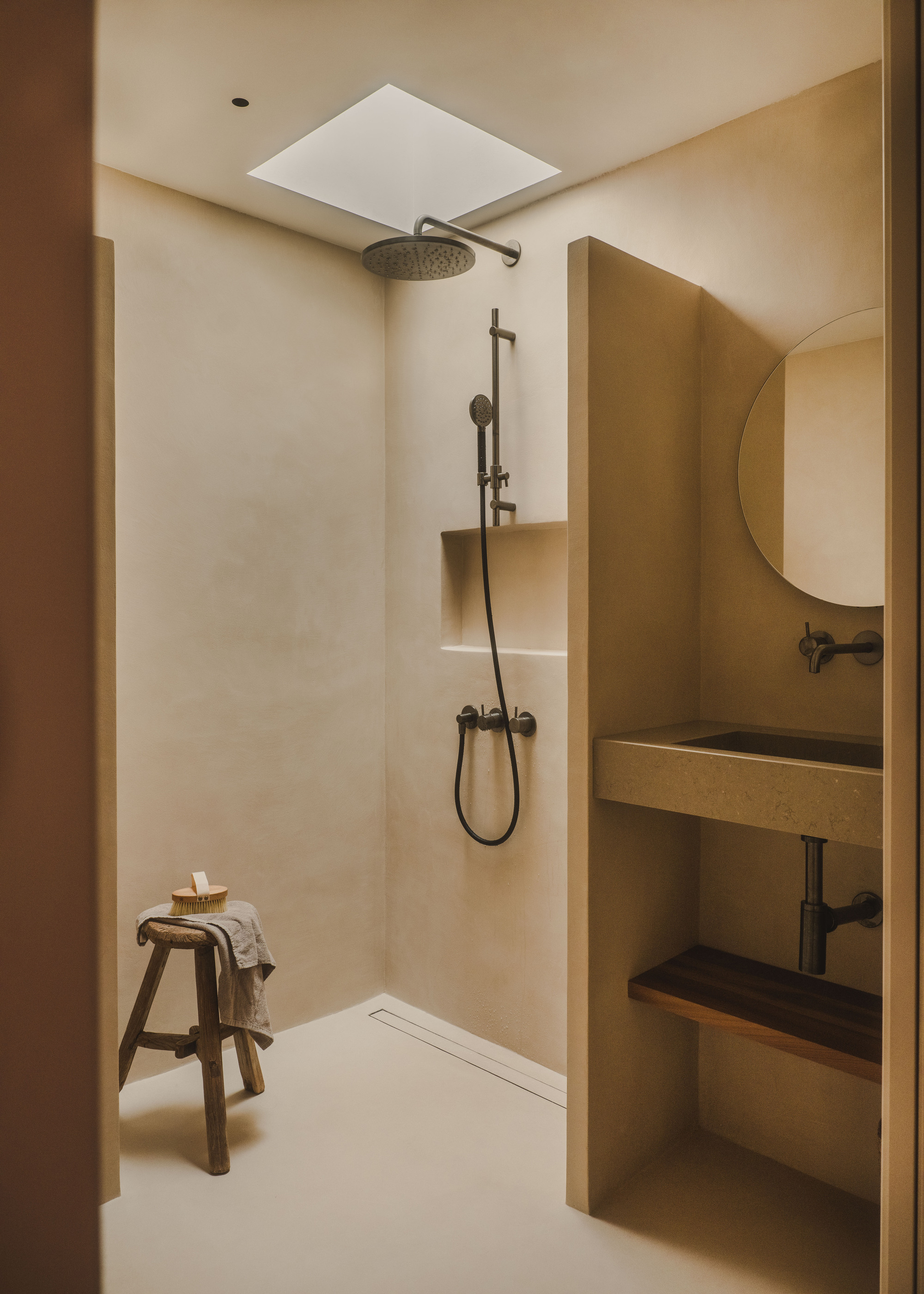
Our desire for a spa-like bathroom has not changed over the years, but our understanding of what that looks like has certainly evolved. Ten years ago, the tiny pebble floor shower was the height of luxury; nowadays, it looks like a recipe for disaster.
"River-rock floors promised a spa feel yet deliver nonstop grout scrubbing," says Lauren Saab, founder of Saab Studios. "Uneven stones trap soap residue, encourage mildew, and make accessibility difficult."
Not only are these tiny stone tiles practically impossible to clean, they're also incredibly unpleasant to stand on, immediately detracting from the relaxing spa feel they aim to achieve.
Interior designer, Evgenia Ermolaeva, agrees, saying, "They're pretty in theory, but uncomfortable and hard to clean. Real homes demand more than visual charm."
Now we've covered all things flooring, it's time to dive into the rest of your bathroom design. These are the bathroom trends we've been obsessing over this year.







